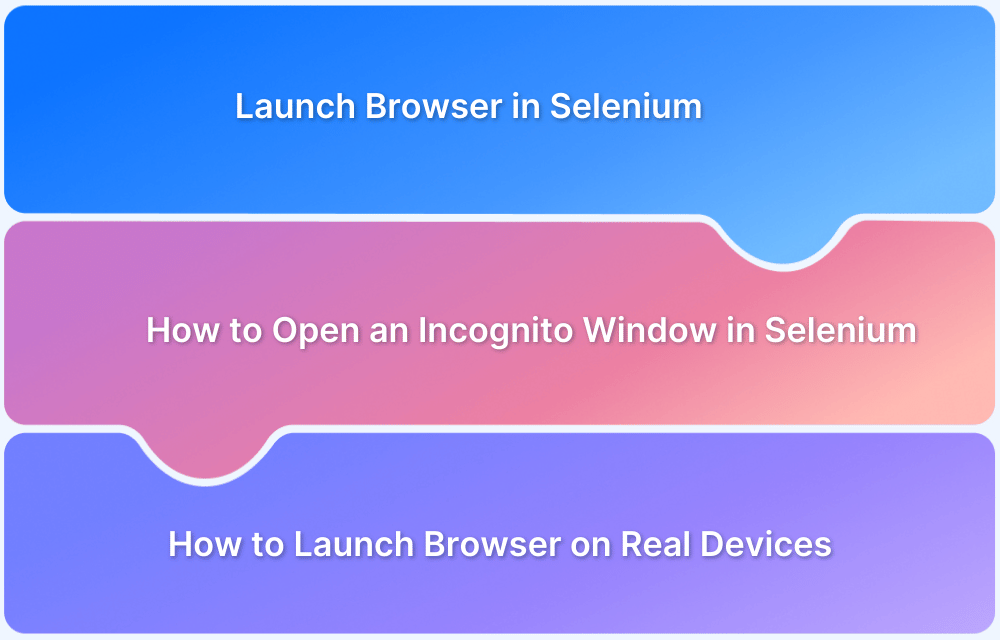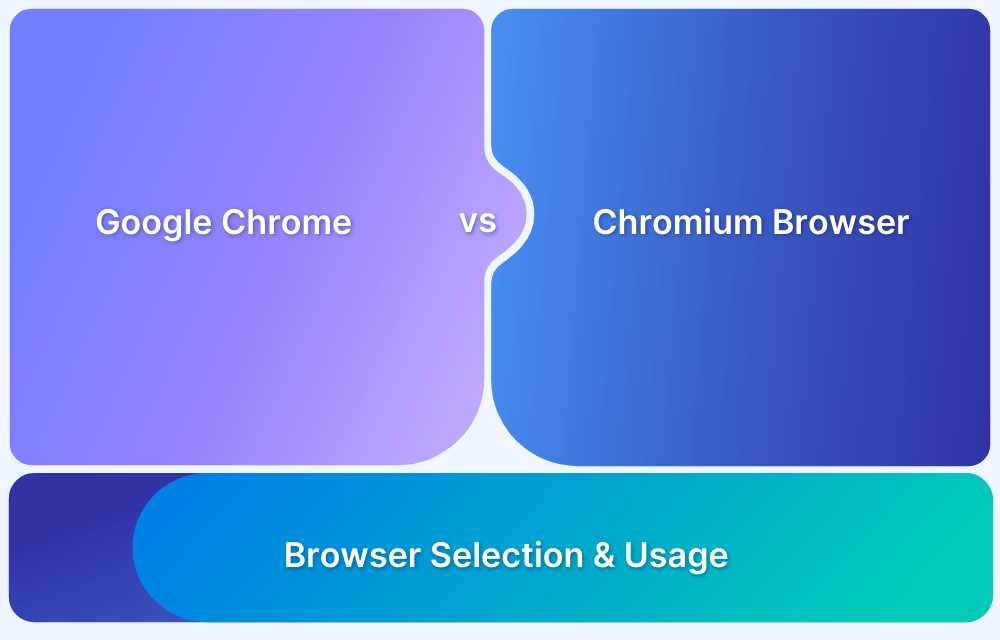Are your Selenium tests flaky across machines?
Scripts that pass on one system often fail on another due to differences in browser setup. These inconsistencies slow test cycles and make results unreliable. In fact, testers spend nearly 20% of their testing hours preparing browsers before running the first test.
Selenium ChromeOptions simplifies this process. It provides control over Chrome during test runs, including headless execution, pop-up management, GPU control, and custom profiles, helping automation run faster and more reliably.
Teams that optimize browser configuration with ChromeOptions report more stable test execution and fewer environment-related failures.
This article explains how Selenium ChromeOptions work, the features they provide, and how to configure them for dependable test execution.
Understanding ChromeOptions in Selenium
Selenium ChromeOptions class allows you to modify and control the Google Chrome browser’s behavior during test execution. This includes enabling or disabling features, managing extensions, handling browser-specific abnormalities, or even running the browser in headless mode.
By utilizing these options, testers can more effectively mimic real-world user scenarios and test specific functionalities.
Getting Started: Setting Up ChromeOptions in Selenium
To use Selenium ChromeOptions, configure the ‘ChromeOptions‘ class provided by Selenium WebDriver. This involves setting desired capabilities and arguments to meet the testing requirements.
Below is a basic example:
from selenium import webdriver
from selenium.webdriver.chrome.options import Options
# Initialize ChromeOptions
chrome_options = Options()
# Add custom options
chrome_options.add_argument("--disable-infobars") chrome_options.add_argument("--start-maximized")
# Pass options to ChromeDriver
driver = webdriver.Chrome(options=chrome_options)This example ensures your Chrome browser behaves according to the configuration specified, improving test control.
Read More: Chrome vs Chromium: Core Differences
ChromeOptions lets you fine-tune browser behavior by controlling pop-ups, permissions, extensions, and execution modes. For complex test environments, BrowserStack’s Selenium specialists can help you define the right configurations for debugging, headless execution, and CI integration to ensure stable, repeatable test outcomes across Chrome versions.
Get Expert QA Guidance Today
Schedule a call with BrowserStack QA specialists to discuss your testing challenges, automation strategies, and tool integrations. Gain actionable insights tailored to your projects and ensure faster, more reliable software delivery.
Common Use Cases for ChromeOptions
Below are the most common use cases for ChromeOptions in Selenium:
1. Running Chrome in Headless Mode
Headless browser mode allows Chrome to operate without a graphical user interface. This is ideal for CI pipelines or running tests on remote servers where UI isn’t required.
chrome_options.add_argument("--headless=new")2. Disabling Browser Notifications
Suppressing pop-ups & alerts during tests ensures there is no uninterrupted execution.
chrome_options.add_argument("--disable-notifications")3. Setting Browser Window Size and Position
Controlling the browser’s size and position helps in testing responsive designs.
#For window size:
chrome_options.add_argument(“window-size=1920,1080”)
#For window position:
chrome_options.add_argument("--window-position=0,0")Read More: Understanding Browser Windows
4. Running Tests in Incognito Mode
Running the tests in incognito mode prevents data caching & makes sure of a clean testing environment.
chrome_options.add_argument(“--incognito”)
5. Managing Browser Extensions
Load and manage extensions during tests to validate functionalities relying on specific add-ons.
chrome_options.add_extension(“path/to/extension.crx”)
6. Automating Browser Behavior for Debugging
Custom configurations can simplify debugging by enabling verbose logging or specific Chrome flags.
chrome_options.add_argument(“--enable-logging”)
Read More: How to Launch Browser in Selenium
Common Challenges with ChromeOptions and Their Solutions
While ChromeOptions offer powerful customization capabilities, below are some of the common challenges that testers might encounter & the practical solutions to overcome them:
Challenges in using ChromeOptions in Selenium:
- Typos and Syntax Errors
- Misunderstanding Option Functionality
- Compatibility Issues Across Browser Versions
- Managing Complex Configurations
- Conflicts Between Extensions or Settings
- Difficulty in Debugging Option-Related Issues
- Improper Handling of User Preferences
1. Typos and Syntax Errors
Typos in option names or incorrect argument formats can lead to silent failures or runtime errors, making debugging difficult.
Solution: Use constants or helper functions to define ChromeOptions, reducing the likelihood of typos. Validate configurations by cross-referencing with the official ChromeOptions documentation.
Example:
VALID_OPTION = "--disable-notifications" chrome_options.add_argument(VALID_OPTION)
2. Misunderstanding Option Functionality
Misunderstanding the behavior of ChromeOptions can result in inaccurate tests or unintended browser configurations, leading to test flakiness.
Solution: Consult the official documentation to fully understand each option. Start with minimal configurations and incrementally test changes to isolate potential issues. For complex configurations, consider logging active Chrome flags to verify applied options.
3. Compatibility Issues Across Browser Versions
Certain ChromeOptions may only be compatible with specific browser versions, resulting in inconsistent behavior across environments.
Solution: Verify which browser versions support each Chrome option. Use feature detection or implement fallback strategies to handle compatibility issues with older versions & maintain consistency across different testing environments.
Example:
import platform
from selenium.webdriver.chrome.service import Service
if "102" in platform.version():
chrome_options.add_argument("--new-feature")
else:
chrome_options.add_argument("--fallback-feature")4. Managing Complex Configurations
Many ChromeOptions can result in cluttered, unorganized code, making it hard to debug or maintain.
Solution: Group options by functionality and use configuration files or environment variables for better scalability.
Example:
# Use JSON for configuration
import json
with open("chrome_options.json") as f:
options = json.load(f)
for opt in options["privacy"]:
chrome_options.add_argument(opt)5. Conflicts Between Extensions or Settings
Adding conflicting extensions or settings can cause crashes, errors, or unresponsive behavior during tests.
Solution: Use isolated test cases to evaluate each extension or configuration independently. For extensions, load them dynamically during runtime and log any conflicts:
Example:
try:
chrome_options.add_extension("/path/to/extension.crx")
except Exception as e:
print(f"Extension conflict detected: {e}")6. Difficulty in Debugging Option Related Issues
Debugging issues in headless mode can be challenging due to the lack of visual feedback, making it harder to pinpoint failures.
Solution: Enable detailed logs and screenshots to capture key events. Use the –enable-logging flag with custom log file paths.
Example:
chrome_options.add_argument("--enable-logging")
chrome_options.add_argument("--log-level=0")
chrome_options.add_argument("--log-path=chrome_debug.log")7. Improper Handling of User Preferences
Failing to account for user specific preferences can result in a testing environment that doesn’t accurately reflect real world usage.
Solution: Implement dynamic mechanisms to store & apply user-specific ChromeOptions, ensuring that the browser behavior aligns with the unique preferences of different user profiles during testing.
Example:
chrome_options.add_argument("user-data-dir=/path/to/custom/profile") Why customizing browser behavior is key for Cross Platform Testing
Customizing browser behavior is important to make sure that web applications work seamlessly across different environments.
Users interact with your application under various conditions, such as different browser versions, devices, screen sizes, and configurations. Using tools like ChromeOptions in Selenium, testers can customize browser settings to replicate real-world scenarios.
For example, running tests in incognito mode mimics the behavior of privacy conscious users while disabling notifications ensures seamless & uninterrupted test execution.
Customizing browser behavior also enables testers to validate performance and functionality on older browser versions or specific configurations, ensuring the application is compatible with a broad range of user environments.
Test ChromeOptions across real Browsers and Devices
Setting up ChromeOptions and testing it on real browsers and devices is crucial to ensuring your web application works seamlessly across different environments.
While local testing with headless browsers or emulators is convenient, it often fails to replicate real-world conditions like device-specific behaviors, browser variations, and network constraints.
By testing on real devices, you can:
- Verify custom browser configurations, like headless or incognito modes, in real-world scenarios.
- Ensure compatibility with various browser versions and devices.
- Uncover issues related to notifications, touch interactions, and screen resolutions.
Testing on real devices eliminates gaps left by emulators. BrowserStack Automate provides access to over 3,500 real devices and browsers to ensure seamless cross platform compatibility. It allows you to:
- Run Selenium tests in real-world conditions, including older browser versions and unique device settings.
- Debug efficiently with detailed logs, screenshots, and videos.
- Scale testing with parallel runs to save time & improve coverage.
Conclusion
Selenium ChromeOptions allows testers to fine-tune browser behavior, enhancing test robustness and reliability.
By fully understanding and utilizing these features, you can streamline your testing process and ensure consistent functionality across different environments.
Combining this with cloud platforms like BrowserStack Automate allows you to effortlessly achieve comprehensive testing coverage and maximize your test efficiency.







